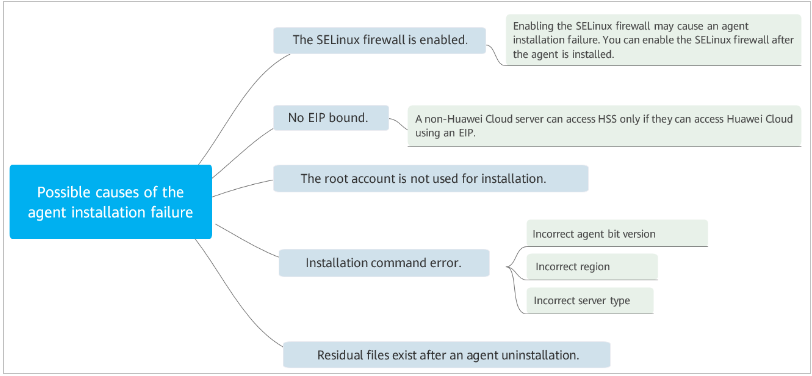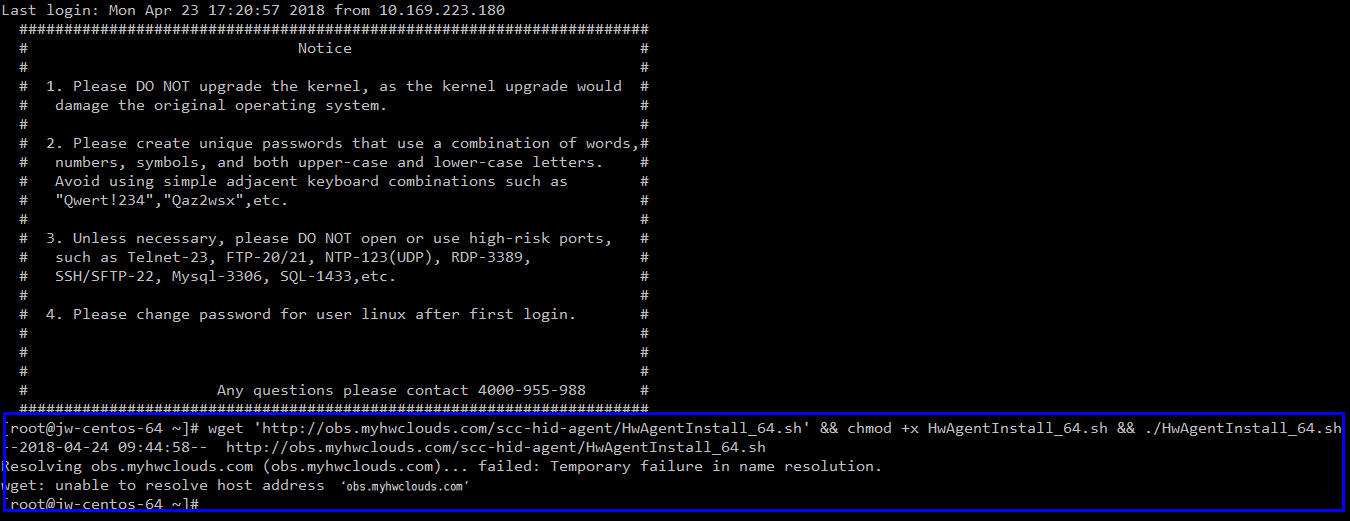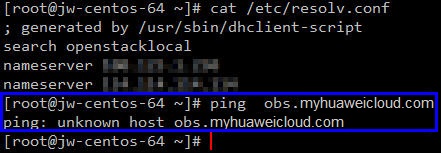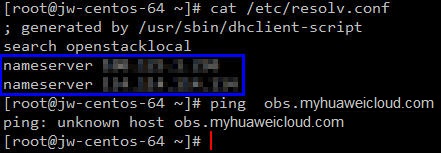¿Qué debo hacer si falló la instalación del agente?
Si ha utilizado HSS de una versión anterior e instalado el agente en la nueva versión HSS, pero la página sigue mostrando que el agente no está instalado, consulte ¿Qué puedo hacer si el estado del agente sigue "No instalado" después de la instalación?
Si es la primera vez que instala el agente y la instalación ha fallado, rectifique el error según si se instala mediante scripts o comandos.
Error al instalar el agente ejecutando los comandos de instalación
Síntomas
El agente no se puede instalar mediante la ejecución de comandos. La página de lista de servidores de la consola aún indica que el agente no está instalado.
Causas posibles

Solución
- Compruebe si el firewall SELinux del servidor está deshabilitado.
- En caso afirmativo, vaya a Paso 2.
- Si no lo es, desactívelo e instale de nuevo el agente.
- Compruebe si hay una EIP enlazado al servidor.
- En caso afirmativo, vaya a Paso 3.
- Si no lo hay, vincule un EIP al servidor y vuelva a instalar el agente.
- Compruebe si el comando de instalación es adecuado para la región del servidor y el sistema operativo.
- Cambie a la región del servidor.
- Copie los comandos de instalación adecuados para su sistema operativo de servidor.
- Ejecute comandos de instalación de 32 bits en un servidor de 32-bit.
- Ejecute comandos de instalación de 64 bits en un servidor de 64-bit.
- Si lo ha hecho, vaya a 4.
- Si los comandos que utilizó son incorrectos, vuelva a instalar el agente con los correctos.
- Compruebe si la instalación fue realizada por usuario root.
- Si lo ha hecho, vaya a 5.
- Si no es así, instale el agente de nuevo como usuario root.
- Desinstale el agente como usuario root e instálelo por la fuerza.
- Si la instalación se realiza correctamente, no se requiere ninguna otra acción.
- Si la instalación falla, póngase en contacto con el soporte técnico.
Error al instalar el agente al ejecutar el script
Síntomas
Se notifica un error durante la instalación del agente. Se muestra el siguiente mensaje de error cuando se instala el agente mediante un script:

Causas posibles
La dirección DNS no está configurada correctamente. El nombre de dominio obs.myhuaweicloud.com no se puede resolver.
Solución
Realice los siguientes pasos para configurar correctamente DNS y reintentar la instalación:
- Ejecute el comando cat /etc/resolv.conf para ver el archivo resolv.conf.
cat /etc/resolv.conf
- Ejecute el comando ping Domain_name. Si se muestra la salida del comando en Figura 2, vaya al Paso 3.
- Ejecute el siguiente comando para abrir el archivo resolv.conf:
vi /etc/resolv.conf
Reemplace las direcciones IP resaltadas en Figura 3 con direcciones IP de DNS comunes.nameserver Common_DNS_IP_address_1 nameserver Common_DNS_IP_address_2
- Después de la modificación, vuelva a ejecutar el comando ping obs.myhuaweicloud.com. Si se muestra información similar a la siguiente, el nombre de dominio se hace ping correctamente.
Figura 4 Mensaje que indica que el nombre de dominio se puede hacer ping

- Ejecute el script de instalación.








